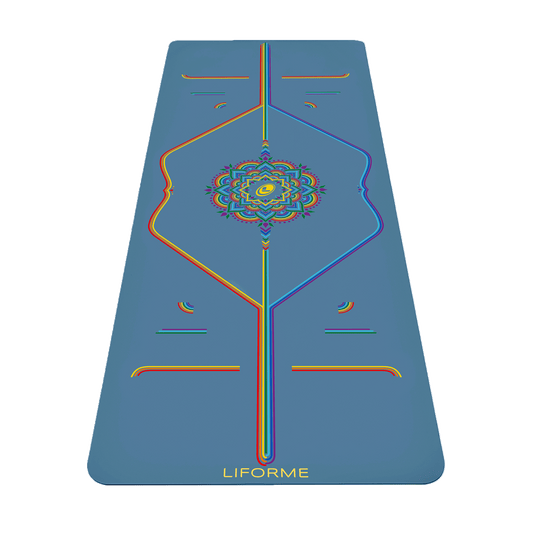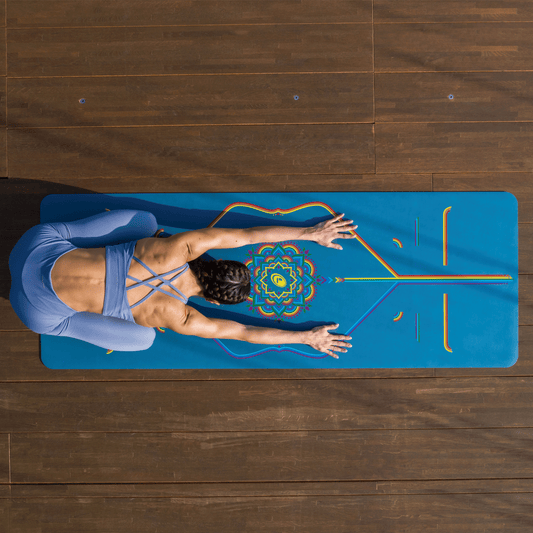Every day, millions of yoga devotees stretch their ways to longer hamstrings, more open hips, and less tension in their necks and shoulders. But these amazing physical benefits are only part of the picture. As you open your body, you’re also opening your mind, which pays dividends in so many areas of your life. It can even help you navigate the challenges of a long-term relationship.
Open Body, Open Mind
Flexibility is one of yoga’s most widely known benefits for very good reasons. Being more flexible isn’t just about making more advanced yoga postures accessible, however. It has lots of real-world applications, like improving range of motion and joint health, which in turn helps prevent chronic pain and promote healthy aging. For people who already have active lifestyles, flexibility may be the missing component of your fitness regime, the thing that will help you avoid or recover from sports injuries and improve athletic performance.
In addition to the physical benefits of flexibility, you’ll find that the mind-body connection that yoga fosters is real and it works in a couple of ways. Let’s think of them as immediate effects and long-term effects.
In the immediate category, stretching helps reduce tension and relieve stress. You’ve probably experienced this yourself, maybe even in your first yoga class. You walk in with all the worries and concerns of your day weighing on your shoulders: work problems, relationship going south, parenting anxiety, fill in your blank. You lay out your mat and are encouraged to focus on your breath, which brings you into the present moment. You can’t imagine that you’ll be able to maintain this fragile hold on the now but, miraculously, you do.
As you receive spoken instructions and translate them into physical movements, you find that the focus this requires allows your busy little brain to let go of all the worries that were so pressing just a few moments ago. Posture after posture, the process is repeated until you discover that an hour has passed in which you didn’t have the extra headspace to dwell on the past or the future. Maybe they tried to butt in here and there but the total physicality of the asana practice pushed them back out. You walk out a little lighter and brighter.
Amazingly, this continues to happen every time you step on your mat. This is the feeling that hooks so many people into yoga: that respite from everyday stress puts things into perspective and may, eventually, help us separate from our spinning minds even off the mat.
While all this is happening upstairs, the stretching you are doing is also at work to relieve your physical tension. Your body has a way of storing all that stuff up, often most manifestly in the shoulders and neck but stealthily throughout the body: hips, legs, ribcage.
When your body is tense, your muscles tighten and hunch together. Just releasing your shoulders away from your ears can be a revelation. Your looser, more relaxed body releases you from a feedback cycle in which your stressed brain creates a stressed body and vice versa. You break the cycle not by controlling the brain but by controlling the body.

The Love Connection
In the long-term effects category, opening your body really does open your mind and your heart. And that’s a key component of functional relationships. Flexibility in your thinking allows you to release the narrative of “I’m just this way and I reject anything that challenges that.” In an argument, it allows you to see both sides and to admit when you’re just digging your heels in instead of compromising.
Long-term relationships require give and take. They also change over time. Both parties have to go with that flow in order to stay together. They have to recognise that the needs of the family unit (just wait until you add kids to the equation!) are sometimes different from the needs of each individual.
That doesn't mean giving up your sense of self or subverting your preferences every time. Both people have to be willing to challenge themselves to adapt. A couple isn’t just you and I existing side by side. It’s seeing what happens when you and I make something new together. That’s the ultimate flexibility.
Yoga allows us to release rigidity so we can bend our conception of what’s possible. What can’t change becomes obsolete. What transforms takes us forward. We learn to walk the line between the discomfort of growth and the pain of pushing too hard past resistance into damage. If that’s not practice for love, we don’t know what is.





































